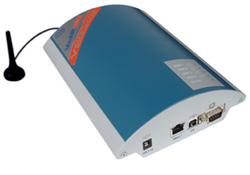2N
2N[edit | edit source]
 The 2N is a type of transistor that was widely used in electronic circuits during the mid-20th century. It belongs to the family of bipolar junction transistors (BJTs) and was manufactured by various companies, including Texas Instruments, Fairchild Semiconductor, and Motorola.
The 2N is a type of transistor that was widely used in electronic circuits during the mid-20th century. It belongs to the family of bipolar junction transistors (BJTs) and was manufactured by various companies, including Texas Instruments, Fairchild Semiconductor, and Motorola.
History[edit | edit source]
The 2N transistor was first introduced in the 1950s as an improvement over the earlier 2A transistor. It quickly gained popularity due to its reliability and versatility, becoming a staple component in many electronic devices of the time. The "2N" designation refers to the fact that it is a second-generation transistor.
Features and Specifications[edit | edit source]
- The 2N transistor is a three-terminal device with a collector, base, and emitter. It is typically housed in a small package, making it suitable for compact circuit designs. The transistor operates on the principle of amplification, allowing it to control the flow of current between the collector and emitter terminals based on the current at the base terminal.
- The specific characteristics of a 2N transistor can vary depending on the model and manufacturer. Common specifications include maximum collector current, maximum collector-emitter voltage, and gain (hfe) values. These specifications determine the transistor's performance and suitability for different applications.
Applications[edit | edit source]
The 2N transistor found widespread use in a variety of electronic applications. It was commonly used as a switch or amplifier in audio circuits, radio receivers, and early computers. Its ability to handle moderate power levels and its low cost made it a popular choice for hobbyists and professionals alike.
Legacy[edit | edit source]
- While the 2N transistor has been largely replaced by more advanced transistor technologies, its impact on the electronics industry cannot be understated. It played a crucial role in the development of early electronic devices and paved the way for further advancements in transistor technology.
- Today, the 2N transistor is still sought after by vintage electronics enthusiasts and collectors. Its historical significance and nostalgic appeal make it a prized component for those interested in restoring or studying the technology of the past.
See Also[edit | edit source]
References[edit | edit source]
| 2N Resources | |
|---|---|
|
|
Search WikiMD
Ad.Tired of being Overweight? Try W8MD's physician weight loss program.
Semaglutide (Ozempic / Wegovy and Tirzepatide (Mounjaro / Zepbound) available.
Advertise on WikiMD
|
WikiMD's Wellness Encyclopedia |
| Let Food Be Thy Medicine Medicine Thy Food - Hippocrates |
Translate this page: - East Asian
中文,
日本,
한국어,
South Asian
हिन्दी,
தமிழ்,
తెలుగు,
Urdu,
ಕನ್ನಡ,
Southeast Asian
Indonesian,
Vietnamese,
Thai,
မြန်မာဘာသာ,
বাংলা
European
español,
Deutsch,
français,
Greek,
português do Brasil,
polski,
română,
русский,
Nederlands,
norsk,
svenska,
suomi,
Italian
Middle Eastern & African
عربى,
Turkish,
Persian,
Hebrew,
Afrikaans,
isiZulu,
Kiswahili,
Other
Bulgarian,
Hungarian,
Czech,
Swedish,
മലയാളം,
मराठी,
ਪੰਜਾਬੀ,
ગુજરાતી,
Portuguese,
Ukrainian
Medical Disclaimer: WikiMD is not a substitute for professional medical advice. The information on WikiMD is provided as an information resource only, may be incorrect, outdated or misleading, and is not to be used or relied on for any diagnostic or treatment purposes. Please consult your health care provider before making any healthcare decisions or for guidance about a specific medical condition. WikiMD expressly disclaims responsibility, and shall have no liability, for any damages, loss, injury, or liability whatsoever suffered as a result of your reliance on the information contained in this site. By visiting this site you agree to the foregoing terms and conditions, which may from time to time be changed or supplemented by WikiMD. If you do not agree to the foregoing terms and conditions, you should not enter or use this site. See full disclaimer.
Credits:Most images are courtesy of Wikimedia commons, and templates Wikipedia, licensed under CC BY SA or similar.
Contributors: Prab R. Tumpati, MD, Prabhudeva
